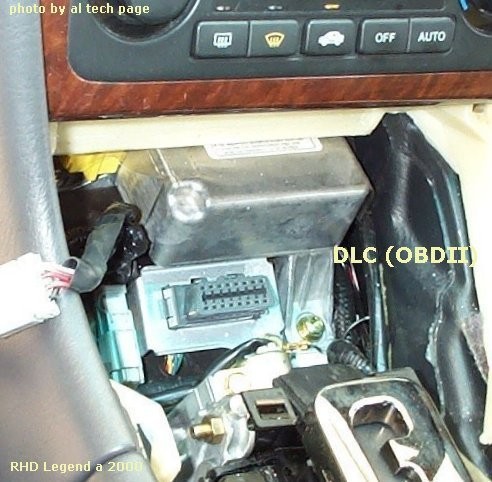Locating the OBD2 port in your Honda CR-V is essential for running diagnostics, reading trouble codes, and using scan tools. This port, also known as the diagnostic port or DLC (Data Link Connector), provides access to your vehicle’s computer system, allowing mechanics and car owners to troubleshoot issues and monitor performance. If you’re trying to find the OBD2 port on your Honda CR-V, you’re in the right place. This guide will help you pinpoint its location quickly and easily.
Where to Typically Find the OBD2 Port in a Honda CR-V
In most Honda CR-V models, the OBD2 port is strategically placed for easy access, usually within the driver’s side area. You should start your search in the vicinity of the steering wheel and dashboard.
Generally, you can expect to find the OBD2 port in these common locations:
- Under the Dashboard: The most typical location is beneath the dashboard on the driver’s side. You’ll likely need to crouch down and look under the dash panel, near the steering column.
- Near the Steering Column: It’s often positioned to the left or right of the steering column, easily reachable from the driver’s seat.
- Around the Fuse Box Area: In some CR-V models, the OBD2 port might be located close to the fuse box, which is also usually under the dashboard or to the side panel in the driver’s footwell.
To help visualize, here’s an example of what the OBD2 port housing might look like in your Honda CR-V:
 Honda CRV OBD2 Port Holder
Honda CRV OBD2 Port Holder
An example of a potential OBD2 port holder in a Honda CR-V, often found under the dashboard on the driver’s side.
Step-by-Step Guide to Locate the OBD2 Port
Follow these simple steps to find the OBD2 port in your Honda CR-V:
- Get into the Driver’s Seat: Position yourself comfortably in the driver’s seat.
- Look Under the Dashboard: Bend down and look under the dashboard, specifically on the driver’s side. Use a flashlight if needed to illuminate the area.
- Search for a Connector: Look for a trapezoid-shaped, 16-pin connector. It’s usually black or grey and slightly protruding or housed in a bracket.
- Feel Around: If you can’t immediately see it, gently feel around under the dash panel, near the steering column and fuse box area. The OBD2 port is designed to be accessible, so it shouldn’t be deeply hidden.
- Consult Your Owner’s Manual: If you are still unable to locate it, your Honda CR-V owner’s manual will have a section detailing the location of the OBD2 port.
Still Can’t Find It? Consider These Points
While the OBD2 port location is generally consistent across Honda CR-V models, slight variations can occur based on the year and specific trim. If you are having trouble, keep these points in mind:
- Year of Manufacture: Older models might have the port in slightly different locations compared to newer ones.
- Right-Hand vs. Left-Hand Drive: The location is typically mirrored for right-hand drive vehicles, remaining on the driver’s side.
- Check Online Forums: Online Honda CR-V forums and communities can be valuable resources. Other owners may have encountered similar searches and can provide specific advice for your model year.
By following these steps, you should be able to easily locate the OBD2 port in your Honda CR-V and proceed with your vehicle diagnostics or scan tool connection.